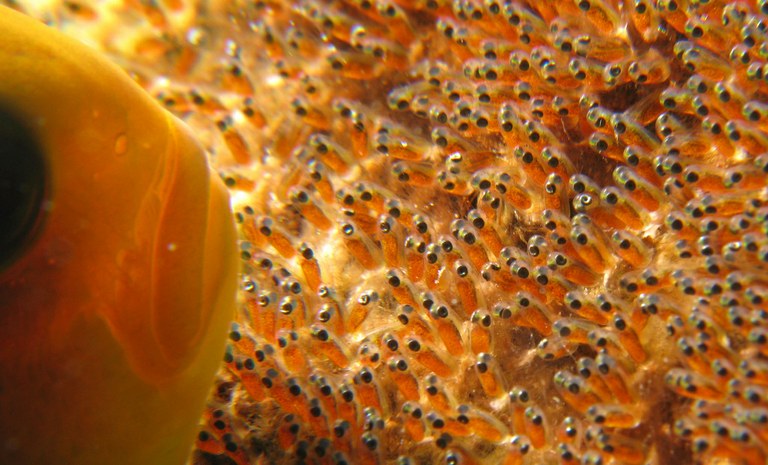In my previous installment, I explained how I use my 3D printer to print equipment for fragging corals. The premise is essentially the same in this installment: identify equipment that is potentially 3D printable, model it, and then print it. Two obvious pieces of fish breeding equipment that fit this criteria are brine shrimp hatcheries and sponge filters for the larval tanks.
Brine Shrimp Hatchery
Retail, brine shrimp hatcheries cost anywhere from $10 to $15 per hatchery. While that is not expensive, 3D printing them will cost much less. My brine shrimp hatchery base shown here uses ABS plastic and costs less than $2.00 for the plastic. That is a cost savings of $8.00-$13.00 per hatchery.
-

- A brine shrimp hatchery that I designed, from 3D model concept to completed print fitted with a 2 liter bottle.
These brine shrimp hatcheries essentially consist of two parts: a 2-liter container with its base cut off and a plastic base that the 2-liter screws into. The 2-liter container is easy to find and you might even have one in your recycling bin. Simply cut the base off of the 2-liter bottle about 3″ up from the bottom using a razor knife. Now for the base. It is available on Thingiverse and once printed yields a nice, sturdy base that the 2-liter container screws into. It has an integrated airline attachment that accepts standard airline tubing. The only other item needed is a 7/8″ garden hose washer that is available at your local hardware store for approximately $1-$2 for a 10-pack. This seals the threads from potential leaks during usage.
To assemble, place the 7/8″ washer in the base and screw on the 2-liter container until it is good and tight. Now attach the 3/8″ airline tubing to the 3D printed base and then attach the other end to a standard aquarium air pump. Your hatchery is now complete.
If you are unfamiliar with hatching brine shrimp, I highly recommend reading the following two articles:
- The Breeder’s Net: Artemia Nauplii As A Food Source by Frank Marini, Ph.D.
- Breeder’s Net : Amazing Artemia! by Suzy Applegarth
Sponge Filter
Sponge filters retail also for $10 to $15 per filter. Again, they are not expensive but the cost will add up as more larval tanks are setup. This part uses PLA plastic and costs maybe $2.00 in plastic per filter. Your savings: $8.00 – $13.00 per filter. PLA is recommended for this application as it is more dense than ABS and will sink in saltwater.
This sponge filter requires three components:
- 3D printed base
- A 8 inch length of 3/8 inch rigid airline tubing
- Two zip ties
- Porous sponge salvaged from an old powerhead or purchased from your local fish store
Download the model from Thingiverse and print it. Obtain the additional parts listed above and assemble it by pushing the rigid 3/8 inch airline tubing into the 3D printed base, wrap the sponge around the central tube, and then zip tie it into place. Now simply hook up your airline and air pump and you are done. Use it as you would any other sponge filter in your larval tanks.
-

- A 3D printed sponge filter. The printed filter housing (left), housing plus airline tubing (center), sponge wrapped around housing (right).
Use Them
Print and use as many of them as you need. Both of these 3D printed parts took approximately 1 hour to print so it would not take all that long to print multiple parts for all of your breeding needs. Incidentally, if you are looking for more information on breeding marine fish, I highly recommend the Marine Breeding Initiative website as a place to learn more about this worthwhile subject.
If you had a 3D printer, what would you print?










0 Comments